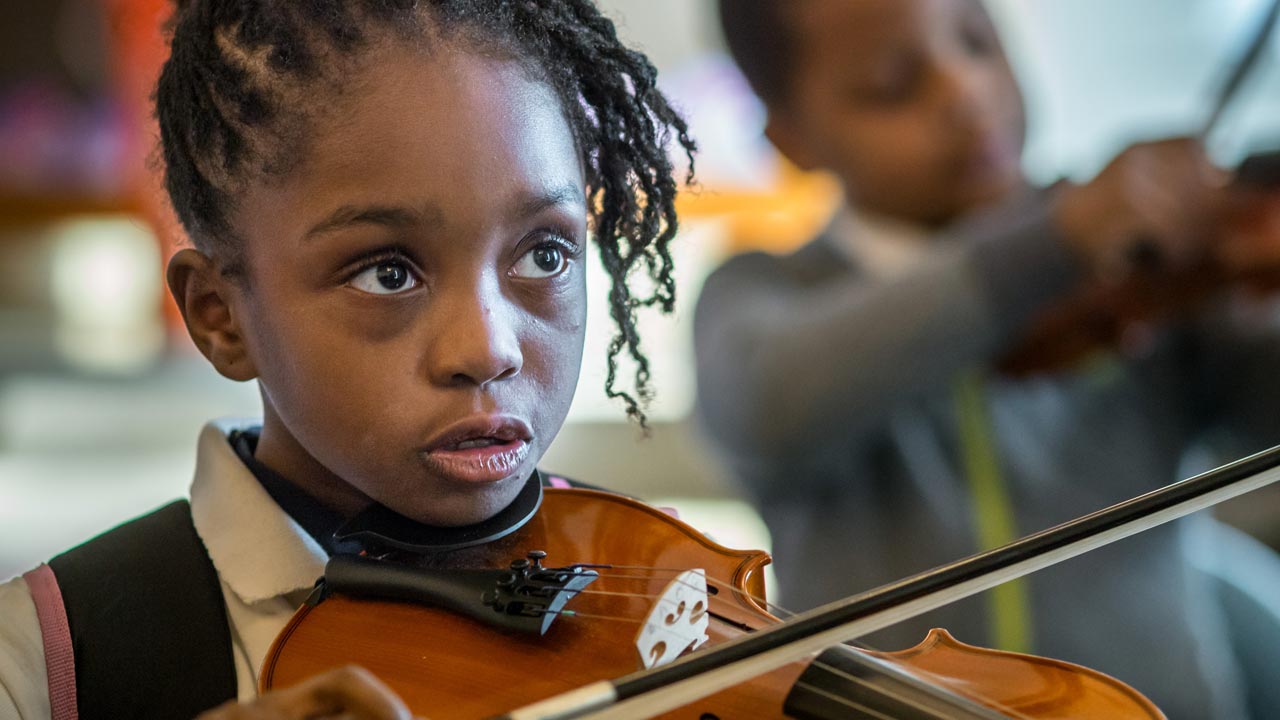Good Neighbors
University programs help students and families in neighboring communities succeed
AmeriCorps member Ericka Stevenson '13 is putting her BA in Family and Child Studies to good use as an education specialist at the Montclair State-supported Oakwood Avenue Community School. It is one of two Orange, New Jersey, public schools in the state's first University-Assisted Full-Service Community School Initiative, designed to promote student success and community engagement.
"I've seen a change in all of the students I've had encounters with. I see the spark that has been reignited when it comes to their learning," says Stevenson, who provides extra support to fourth and fifth graders who are struggling with math and science.
Stevenson is making a difference in students' lives, thanks largely to a $2.5 million grant Montclair State received from the U.S. Department of Education. The grant, one of only nine awarded nationally in 2014, helps the Oakwood Avenue and Rosa Parks Community Schools support various quality, on-site academic and cultural enrichment programs and social and medical services that benefit more than 1,000 students and their families each year.
It is through such programs as the community schools initiative, as well as other grant-supported programs like the Newark-Montclair Urban Teacher Residency and Project C.O.P.E. in Paterson, that the University fulfills its mission of contributing to the larger community – and being a good neighbor. Here is a look at three of them.
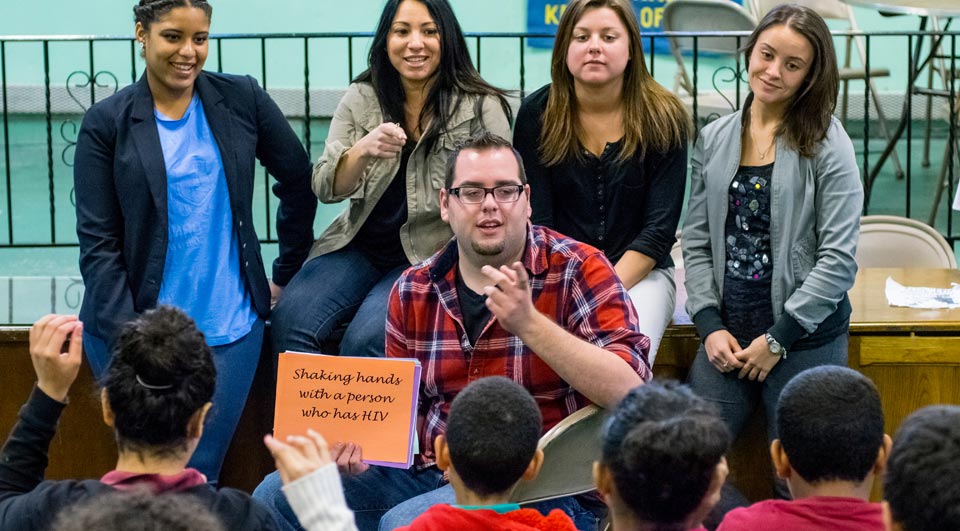
Transforming communities
The Orange School District started the Orange Community School Initiative in 2009, with funding from the JPMorgan Chase Foundation and a goal of removing barriers to success in the 5,000-student district. In 2013, Montclair State took a leadership role in the initiative to further that mission.
As an early key partner, Montclair State provided support from service-learning students and AmeriCorps members, eventually becoming the lead partner for the two K-7 schools, laying the foundation for a Universityassisted community school model, where schools function as vital neighborhood hubs.
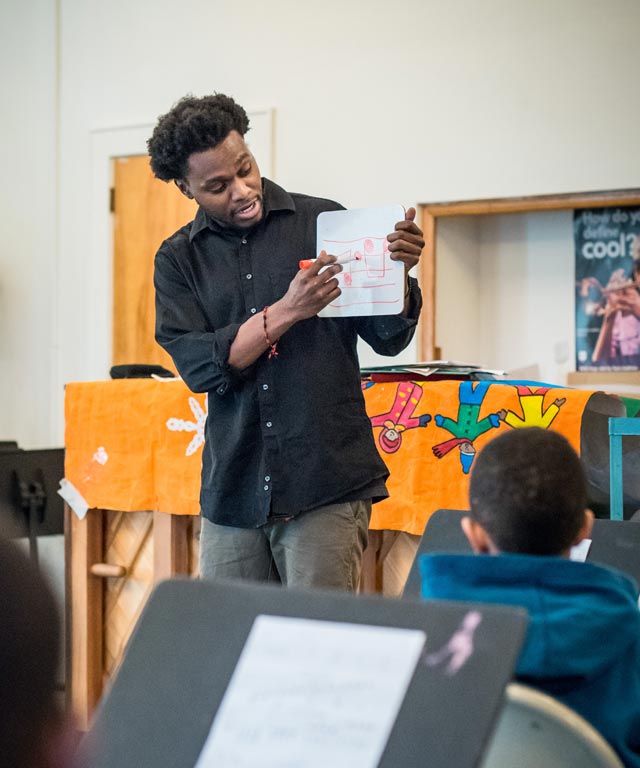
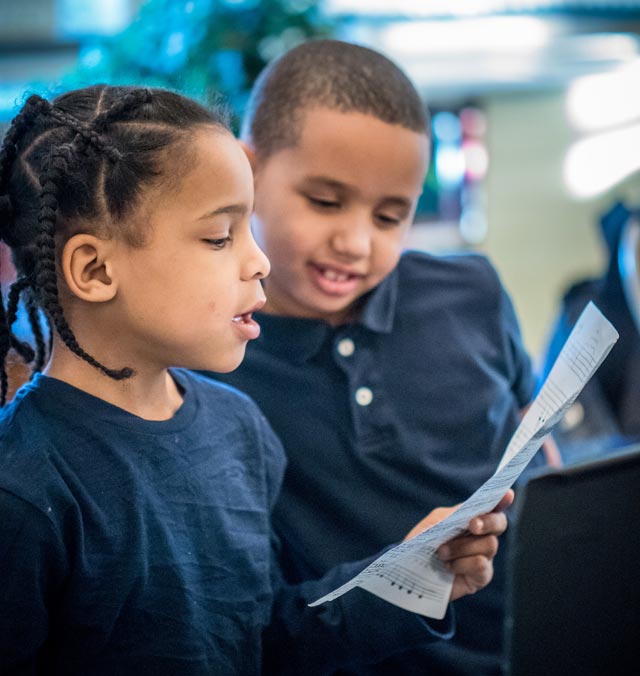
"This is an incredibly transformative process for both the schools and the communities," says Bryan Murdock, the grant's principal investigator and director of the University's Center for Community Engagement. "The idea is to transform the schools into community centers where families can easily access health, social and educational services and programs, with the ultimate goal of creating healthy communities and thriving families. With the new grant, we can make an immediate, positive impact on the Oakwood and Rosa Parks students and their families."
The transformation is well underway. During the fall of 2014, 75 servicelearning students and student volunteers supported after-school enrichment programs. In addition, Stevenson is among a number of Education, Environment and Community Outreach (EECO) AmeriCorps members working full time with students who are performing below grade level, providing translation services for English language learners, and participating in after-school programs and enrichment clubs.
"My role goes far beyond my job description," says Stevenson, who also serves as a cheerleading coach and helps with the Sisterhood Club.
"Lives are opened by opportunities that would not be there except through the community schools."
Candace Goldstein,
Orange Public Schools
Stephanie Desanges, a 2010 graduate who received her master's in Child Advocacy in 2013, fosters family engagement at the Oakwood School as a family liaison. She has also bonded with students who, like her, speak Creole. "I'm a listening ear and a presence that they lack in their personal lives," she explains.
Site coordinators at each school collaborate with local organizations to meet specific health, social, emotional or emergency needs of students and families. "In November, when a number of school families were displaced from their homes by house fires, the site coordinators organized community-wide clothing drives," Murdock recalls.
As director of special programs in the Orange Public Schools, Candace Goldstein coordinates the project from the district end. "Watching students and families slowly begin to take the opportunities offered and form aspirations for their futures has been one of the most rewarding experiences in my 31 years in education," she says. "Lives are opened by opportunities that would not be there except through the community schools."
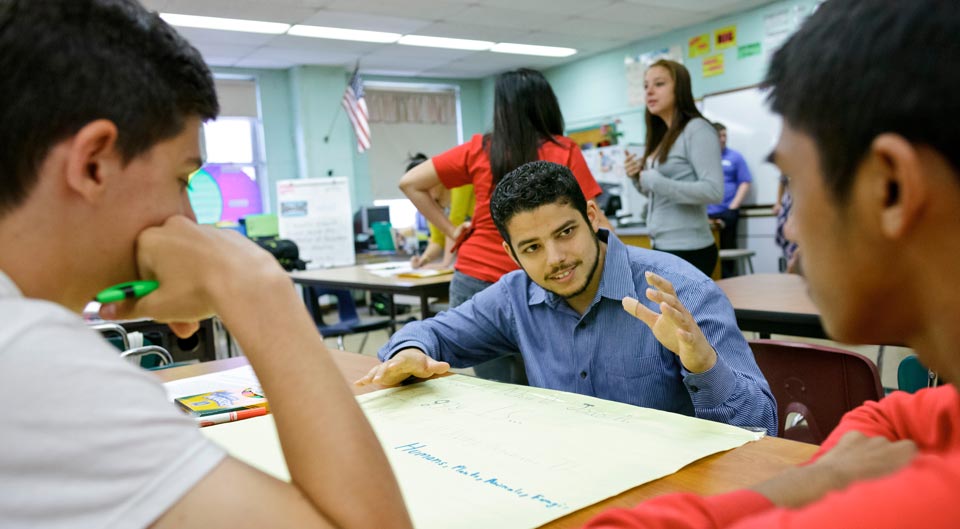
Helping urban youth cope
For 11 years, Project C.O.P.E. (Communities Organizing for Prevention and Empowerment) has developed and implemented innovative, effective substance abuse and HIV community prevention programs in Paterson, New Jersey, which has one of the state's highest rates of substance abuse and HIV/AIDS infection among African American and Hispanic/Latino residents.
Currently funded with a five-year award from the White House Office of National Drug Control Policy and the Substance Abuse and Mental Health Services Administration (SAMHSA), Project C.O.P.E.'s comprehensive HIV and substance abuse prevention approach includes community mobilizing, intensive case management and interactive health education-based interventions.
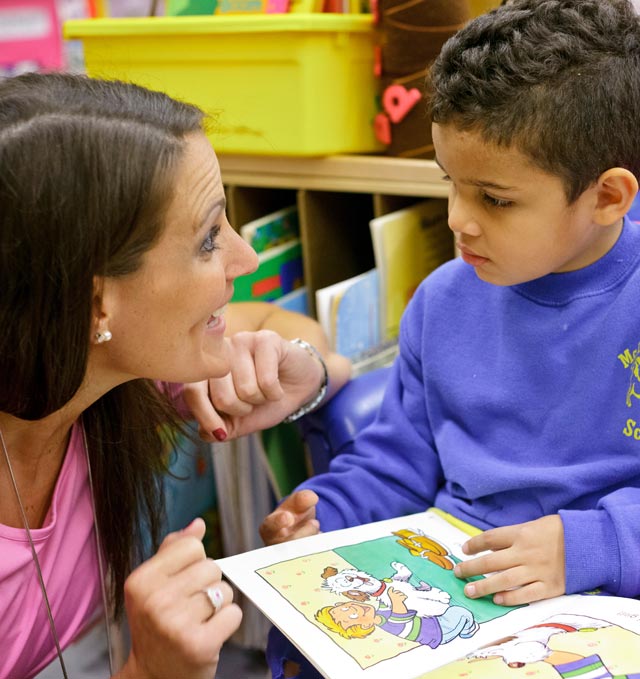
"Our prevention messages and health education curricula have reached more than 7,000 teens in the past 11 years," says Family and Child Studies Professor Robert Reid. "More than 200 Montclair State undergraduate and graduate students have been involved with Project C.O.P.E., and our program has also served as a field site location for graduate students from other area universities." Reid, along with Family and Child Studies department colleague Associate Professor Pauline Garcia-Reid, recently received a one-year U.S. Department of Health and Human Services and SAMHSA grant to use social media ranging from Facebook to YouTube to further support their work with Project C.O.P.E.
"What's most rewarding has been our ability to effectuate change and advance social justice possibilities for individuals living in economically distressed communities," says Garcia-Reid.
"What's most rewarding has been our ability to effectuate change and advance social justice possibilities for individuals living in economically distressed communities."
Pauline Garcia-Reid
Project C.O.P.E. has also cultivated a rich learning internship environment that helps former students like Licensed Social Worker Caitlin Eckert '11 launch careers in the field of Family and Child Studies. Hired by the project after her internship ended, Eckert spent two years working in multiple capacities.
"This was an invaluable opportunity to learn about community organizing and prevention needs in relation to HIV/AIDS and substance abuse and then take that knowledge and work as a change agent with the youth of Paterson," she explains. "I am indebted to the Reids for letting me be part of this initiative, which I wholeheartedly believe has shaped the type of social worker I am today."
As the data management coordinator and doctoral research assistant for both Project C.O.P.E. and the related initiative, the Paterson Coalition Against Substance Abuse (P-CASA), David Lardier collects and analyzes data from focus group interviews and surveys. "When we engage with coalition members and families, you can see their appreciation, hope and drive," he explains. "The people of Paterson are 100 percent behind us on this endeavor."
Family and Child Studies graduate student Jarline Rosario has also been actively involved with P-CASA. "What is rewarding to me is seeing how the data research aspect of the program helps implement policies and ordinances for the city of Paterson," she says. "Sharing results from the focus groups with community members really urges them to listen to youth who may not otherwise be heard."
Project C.O.P.E.'s groundbreaking work has not gone unrecognized. The U.S. Department of Health and Human Services, SAMHSA, the Center for Substance Abuse Prevention (CSAP) and the State of New Jersey's Office of the Attorney General are among the groups that have called it a model communitybased prevention program.
Supporting STEM teachers
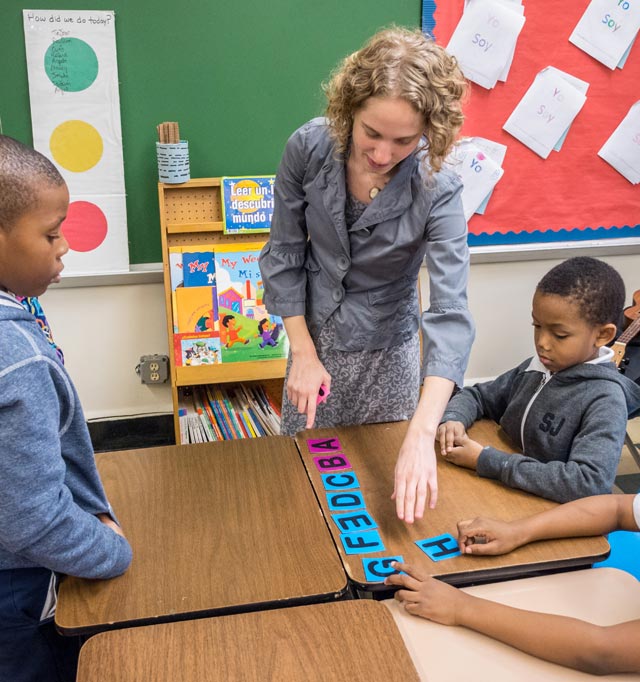
Montclair State, which has a staunch commitment to improving Newark Public Schools, recently received its second five-year, $6 million-plus U.S. Department of Education grant to fund its Newark-Montclair Urban Teacher Residency (NMUTR) program. It is one of 24 universities receiving Teacher Quality Partnership Grants supporting educational partnership programs with high-needs school districts to recruit, prepare and support more than 11,000 teachers.
With a focus on preparing teachers in science, technology, engineering and math (STEM) disciplines, and on encouraging underrepresented groups, such as women, minorities and people with disabilities, to teach STEM subjects, the awards support President Obama's goal of preparing 100,000 STEM teachers by 2021.
"The Urban Teacher Residency builds on more than three decades of partnership between Newark Public Schools and Montclair State dedicated to the continuous improvement of our teacher education program and K-12 education in Newark," says Tamara Lucas, acting dean of the College of Education and Human Services.
The apprenticeship-based program's graduates earn the Master of Arts in Teaching degree, which has two tracks: an early childhood teacher certification with dual certification in teacher of students with disabilities and a content area secondary certification in mathematics or science. In return for tuition, fees and a living stipend, residents are required to teach in Newark Public Schools for at least three years.
"The grant provides thoughtful, excellent teachers for the Newark Public Schools who advocate for students and their families in support of learning," says Jennifer Robinson, executive director of the Center of Pedagogy at Montclair State and one of the project's principal investigators. The program has also established a base of teachers dedicated to mentoring the next generation of Newark teachers.
Notes Robinson, "Seventy percent of the residents are from racially and ethnically diverse groups, reflecting the populations of the students in our classrooms today." To date, 100 percent of the residents have been hired after completing the program.
"Looking to the future, we hope to continue to provide high-quality, highly motivated teachers for the Newark Public Schools, with an emphasis on building better schools to advance and improve student learning," says Robinson. "We've learned that the residency model helps teacher candidates gain the depth of knowledge and confidence needed to teach in today's classrooms and schools."
There are many ways to be a good neighbor. For Montclair State, it is programs like these three and others that really make the difference.
